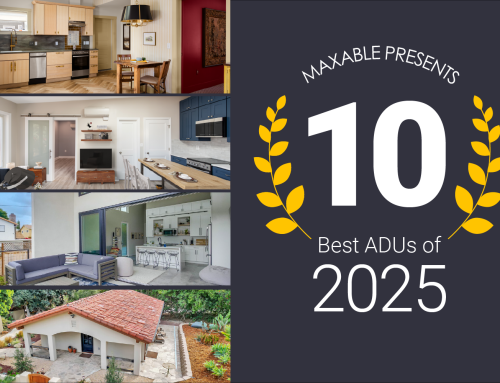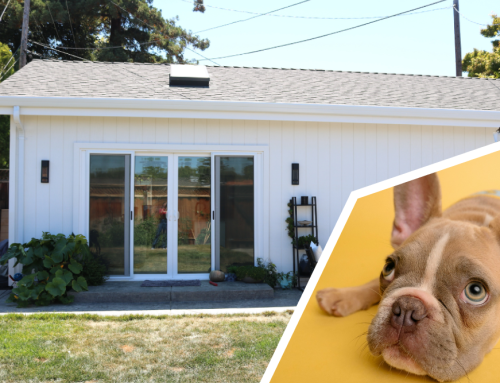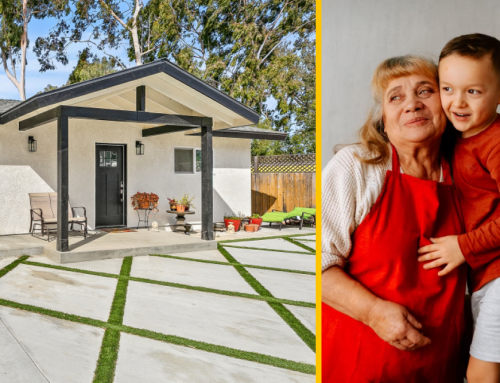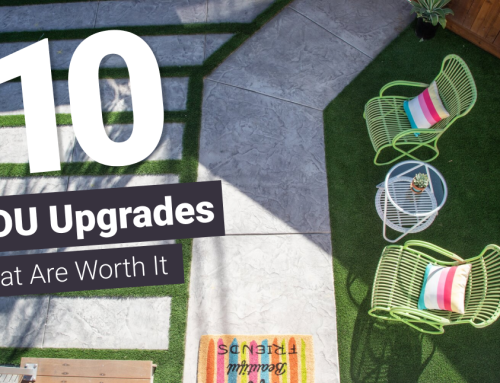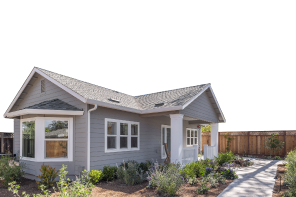So, you’ve chosen an ADU designer and you’ve scheduled your first meeting. Exciting! But, what exactly goes on in a meeting with a designer?
This initial meeting sets the foundation for a collaboration, where your ideas and requirements meet the expertise and creativity of the designer. It’s an exciting moment and an opportunity to align your vision with the practicalities of design and construction, while adhering to current ADU regulations.
Here’s what to expect in your meeting with your ADU designer.
#1 Get ready to talk numbers

Even though you’re still several months away from breaking ground on construction, it’s critical to have an idea of your total budget. That should include:
- Architecture
- Site preparation
- Demolition (if necessary)
- Permitting fees
- Construction
Certain architectural elements are going to be more expensive, so if you’re trying to keep your budget modest, you want to make sure your designer is well aware of your financial considerations from the start. This upfront transparency about budget constraints allows the designer to tailor their recommendations to align with your financial goals.
Even seemingly simple design features like large windows or vaulted ceilings are going to add tens of thousands to your construction cost because of the extra engineering these things require.
This is why getting your financing pre-qualified is so important. By clearly defining your budget, you not only establish realistic expectations but also ensure that your ADU project stays on track from its inception.
#2 In-depth analysis of your property

While the primary focus will be on the specific area designated for your ADU, be ready for a comprehensive analysis that goes beyond the immediate building site. Your designer, whether through on-site visits, virtual assessments, or public record reviews, will delve into a thorough examination of your entire property.
This is to ensure that their design not only conforms to your property in a way that is logical, but also adheres to local regulations. Things they will want to take a look at can include:
- Property lines and easements
- Layout of the main house
- Soil conditions and topography
- Historical or legal considerations
- Potential grading considerations
- Surrounding neighborhood context
- Existing utility infrastructure
- Unpermitted work
Let’s highlight unpermitted work for a second. This can be anything such as a shed, deck, or room addition to the main house. If you have unpermitted work on your property, there’s no need to panic. Thanks to SB 897, you can still build your ADU, as long as the unpermitted work does not pose a health or safety risk.
However, your designer will need to know of any unpermitted work so that it can be taken into consideration when they’re designing your ADU.
#3 Utility integration planning

Along the same vein of budget and site analysis, your designer is going to want to know about utility connections. On most single-family properties, sewage, water, and in some cases, electricity, run underground to the main line in the street in front of the property. The planning phase involves discussions on optimizing these connections in a way that cut costs and enhances overall efficiency.
Most of this information will be available in public records, but your designer will likely have an engineer come to the property to assess the current state of utility connections and ensure they can handle the capacity of an additional dwelling unit.
Be prepared to also answer questions about whether you want separate meters or solar panels.
Quick note: solar panels are required for new detached ADUs.
These considerations need to be addressed in the final permit set that your designer will submit to the city.
#4 Prepare a list of must-haves

Staying on budget doesn’t mean giving up the vision you have for your ADU. The key is knowing what truly matters most to you. Before you sit down with a designer, come prepared with a list of must-haves. Those non-negotiable features that will make your ADU feel like your space rather than just another unit.
Your list can cover anything from practical essentials, like a washer/dryer or ample closet space, to design details, such as a specific countertop material, natural light through skylights, or a private outdoor patio. Think of it as your “ADU wishlist,” but prioritized: what you absolutely need, what would be nice to have, and what you can live without.
By clearly outlining these must-haves, you’re giving your designer a roadmap that helps them allocate your budget where it counts most. Instead of spreading resources thin across features you don’t value as much, they can zero in on the elements that will bring you daily comfort and long-term satisfaction. In the end, this approach ensures your ADU feels both financially achievable and deeply personal to your lifestyle.
#5 Be flexible

With that being said, also be prepared to have discussions about different options that might better align with your needs.
We’ve seen it time and time again where clients walk into a meeting with an exact design in mind, only to end up with a completely different and more optimized plan. Your designer is experienced in translating your ideas into functional and aesthetically pleasing designs, and this process often involves exploring various options.
Your designer may even introduce new ideas you hadn’t even considered. Take Brian and Nora’s ADU for example. Due to high labor costs in the Bay Area, the couple was looking for the most cost-effective design and envisioned a simple box stacked on top of their detached garage. Through making small tweaks to the design, like an offset window and a slight overhang, their architect took their ADU from boring to stunning while staying on budget.
Maxable is Your Primary ADU Resource
Maxable brings a wealth of experience and a dedicated network of ADU designers and architects ready to guide you through the intricacies of ADU design. Whether you’re envisioning a space for family expansion, exploring rental opportunities, or considering sustainable and adaptable features, Maxable is your trusted partner in realizing your ADU dreams.
Ready to take the next step in bringing your ADU vision to life? Book a consultation with Maxable today. Our team of experts is eager to understand your unique needs, discuss your ideas, and provide tailored solutions that align with your goals.
FAQs About ADU Designers
What’s the difference between an architect and designer?
The terms “architect” and “designer” are quite similar. An architect holds a certification that allows them to design structures that are larger than two-stories. A designer is only authorized to design up to two-stories. Essentially, since ADUs cannot be larger than two-stories, either an architect or designer could design your project. However, regardless of who you hire, what’s most important is that this individual has experience in designing ADUs specifically. Check to make sure they have at least five successfully permitted ADUs in your city to ensure you’re hiring someone with the right experience.
What permits are required for building an ADU?
The specific permits required for building an ADU vary based on your location and local regulations. Generally, you’ll need a building permit, and additional permits may be necessary for plumbing, electrical work, and other aspects of construction. Your ADU designer is responsible for obtaining the required permits for your project. Check out our blog for a full breakdown, What Does an ADU Designer Do?
What qualifications should I look for in an ADU designer?
The most important qualification your ADU designer should have is knowledge and experience designing in your jurisdiction. Many cities in California have different ADU regulations, and an experienced designer who is well-versed in the specific rules and requirements of your local jurisdiction can streamline the design and permitting process.
This expertise can speed up the design and permitting process and save you costs in the long-run.
Other qualifications to look out for include:
- Good communication skills
- Transparency
- Strong portfolio of ADU projects
- Positive testimonials
- Strong understanding of construction costs.
By prioritizing these qualifications, you can confidently choose an ADU designer who not only meets your specific jurisdictional needs but also excels in communication, transparency, and delivering successful ADU projects.


